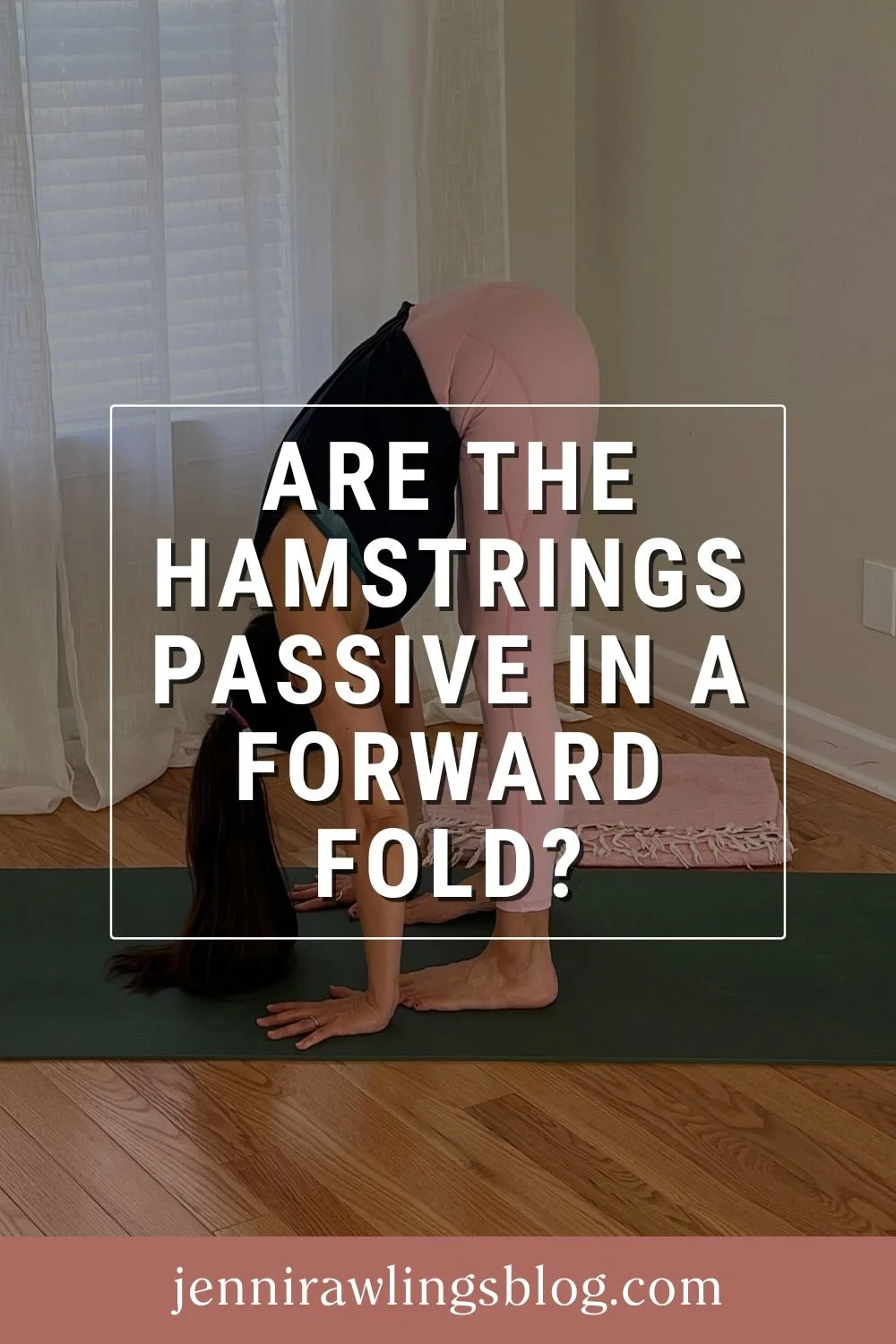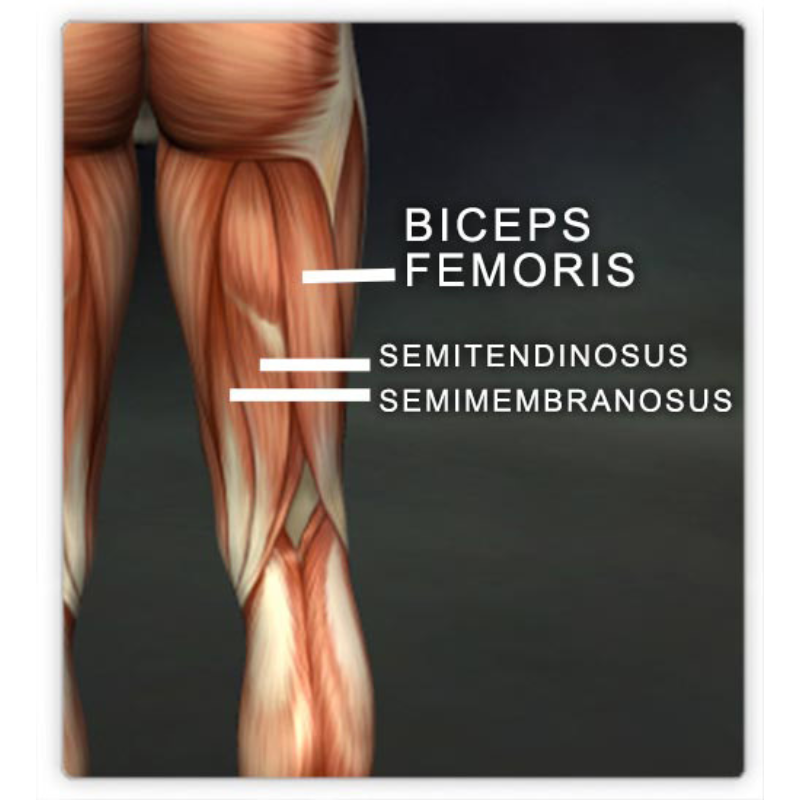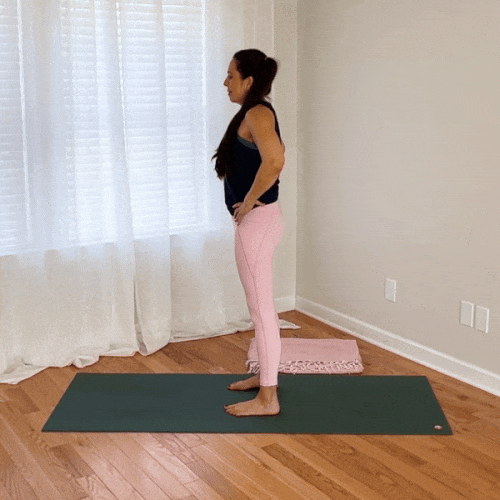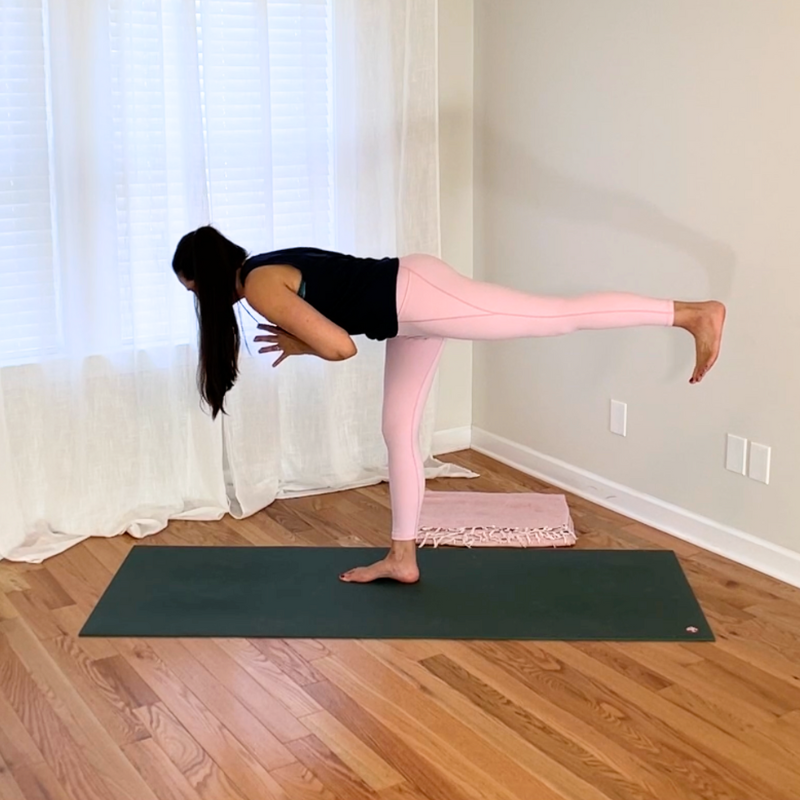Are the Hamstrings Passive in a Forward Fold?
This blog post was first sent to Jenni’s email list as an email newsletter. Sign up for the JRY email newsletter here!
Here's a great question I received from one of my website members:
"In sun salutations, in the forward fold, are our hamstrings active or passive? I think I feel mine working, but more than one yoga teacher has taught me they should be relaxed. I'm confused!"
I love this question, and I definitely see how this can be confusing.
In the yoga world, we sometimes hear that when a muscle is in a lengthened or stretched position, this means it's "passive," "inactive," or "relaxed."
While this might seem like an intuitive idea on the surface, it's not an accurate depiction of how our muscles work!
When it comes to movement, it's not the case that muscles in lengthened positions are inherently relaxed/passive.
In reality, a muscle can be active through its entire range of motion: whether it's in its shortened, mid-range, or long position.
What determines whether a muscle is "active" or "working" isn't its length; it's whether a load is being applied to the body that the muscle must work against! 💪
Let's take this insight and apply it to today's example: the hamstrings in a standing forward fold.
First of all, quick anatomy primer: the hamstrings are a group of three muscles on the back of our thigh. They cross both the hip and the knee joint, and they work when we bend our knee or extend our hip:
When we fold forward from standing, our hamstrings don't "turn off" or "relax." Instead, they work to resist the load of our torso as it hinges downward in space.
As we lower down, the hamstrings work as they lengthen to control our lower into the fold:
This is known as an eccentric contraction – a muscle contraction that takes place as a muscle lengthens.
And similarly, when we rise back up to standing from our forward fold, our hamstrings work as they shorten to lift us back up:
This is known as a concentric contraction – a muscle contraction that takes place as a muscle shortens.
For comparison, let's consider the example of a seated forward fold instead of a standing one (e.g., paschimottanasana in yoga).
When we're seated on the floor like this, our hamstrings don't have to work to hold us up because the floor supports all of our weight:
Therefore, in a seated forward fold, our hamstrings are passive. (To be technical about it, there may be some light activity in the hamstrings in this position due to the stretch reflex, but that's pretty minimal and is a side topic for another day!)
Just to be clear, though, the hamstrings aren't passive in a seated forward fold because they're in a lengthened position. They're passive because they're unloaded.
Remember: length isn't the determining factor for whether a muscle is working – load is!
In a standing forward fold, our relationship to gravity – and therefore the mechanics involved – are different. Here, the hamstrings are active because they work against the load of our torso.
The hamstrings are active in a standing forward fold – but are they strengthening?
So we've established that the hamstrings are active – not passive – in a standing forward fold. But does this mean that uttanasana (standing forward fold) in yoga strengthens our hamstrings?
No, not really!
Here's a key insight about the body and movement that I find not to be widely understood in the yoga world:
Just because a muscle is active doesn't necessarily mean that muscle is strengthening!
Strength adaptations requires specific parameters to be in place (e.g., intensity, frequency, proximity to failure). These parameters generally are notmet in a standing forward fold.
BTW, I talk all about the science of strength adaptations in my 4-hour CE course for yoga teachers – check it out if you'd like to fill in the knowledge gaps your YTT didn't cover!
Now back to uttanasana and the fact that our hamstrings do work in this pose, but they don't strengthen.
Here's the main reason. As yoga practitioners, we've all lowered down and lifted up out of uttanasana gazillions of times (rough estimate 😉). As a result, our bodies adapted to any potential strengthening that may have been available in this movement long ago.
So How Do We Strengthen Our Hamstrings in a Forward Fold?
One strategy might be to add more load to the movement by folding forward on one leg instead of two, as in warrior 3 pose:
However, because it's just our bodyweight, warrior 3 is also inherently limited in its ability to offer us strengthening benefits. Just like with uttanasana, we longtime yogis adapted to any potential strengthening benefits that were available in warrior 3 long ago.
What's a yogi seeking stronger hamstrings in forward folds to do?
The reality is that if hamstring strength in a forward fold is a goal of ours – and it should be, because yogis have notoriously weak hamstrings, and because strong hamstrings are protective against "yoga butt" (a.k.a. proximal hamstring tendinopathy) – then we may need to do something that many yogis bristle at.
We may actually need to... pick up a weight! 😱
Can you believe it?? (Haha.) I know that the yoga community overall is pretty insular and tends to turn its collective nose up at the idea of strength training. But as a movement science-based yoga teacher, I'm a major proponent of yogis lifting weights!
For example, a Romanian deadlift is an excellent exercise for effectively strengthening our hamstrings in a forward fold movement pattern:
By holding a weight here, we add more load that our hamstrings must work against. And once we’ve built strength using one specific weight, we can continue to stimulate strength adaptations over time by using a heavier weight, performing more reps, etc.
See? The formula for building strength when lifting weights is so simple and straightforward – and much more effective than attempting to build strength within our bodyweight yoga practice itself.
Here’s another example of adding load to a forward fold movement pattern – a single-leg deadlift:
As you can probably see, a single-leg deadlift is basically a loaded, dynamic warrior 3 pose.
When we strength train our hamstrings using smart, targeted, strength training exercises, we increase our hamstrings’ capacity to tolerate load, which is a major win for yoga practitioners!
Want to strengthen your hamstrings with a tried-and-tested program co-created by a yoga teacher and an Exercise Science professor?
Check out our 5 Weeks to Strong & Flexible Hamstrings program! Join tons of yogis who have made their hamstrings happy with our follow-along strength practices.











